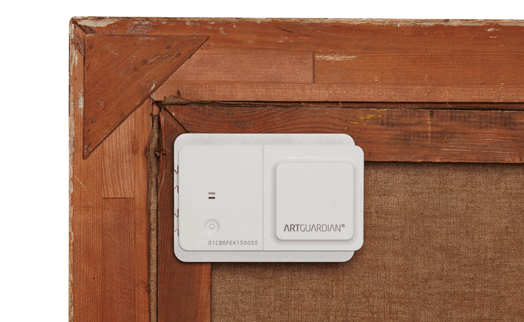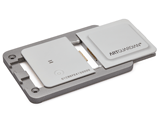Anything but l’art pour l’art
The Fraunhofer IZM institute is making history – art history. The automated artwork protector ArtGuardian has made the leap from research to production.
It all starts with a hare. A common European hare, lepus europeus, at rest. Mottled fur, with finely nuanced brown hues. Feet held side by side. Full of life, but over 500 years old. Not for him the brief span of a hare’s life. He was captured for all eternity in the watercolour brush strokes of Albrecht Dürer. But when it is time for him to go on a journey, to become the star of a new exhibition, certain questions come to mind: How can the lender be sure that the artwork will be treated with the utmost care it deserves? How can museums and galleries provide reliable proof that the precious works they were entrusted with are looked after? The answer is: They cannot, or rather could not until Dr Stephan Guttowski, a researcher at Fraunhofer IZM, began to ask these same questions. Guttowski leads the institute’s Systems Design and Integration section. An electrical engineer by trade, he is an art enthusiast by nature – no specialist connoisseur, but a researcher with a passion. And: Art and technology are two fields that have much in common. His dual passions took Guttowski into many discussions with restorers, art historians, IT specialists, and product designers. How can artworks be protected reliably? The threats and risks are manifold: Exposure to light, to heat, to humidity. The list of threats is long, and many technical disciplines need to contribute to the solutions. Guttowski is not alone in this pursuit: Jan Hefer is in charge of the conceptual development and design of the system and its user interface, while Carsten Brockmann manages the development of its components.
Safety at the click of a button
Seven years after Dürer’s hare took to the road, the work is done: The IZM artwork protector is ready for production. It has completed its pilot tests; a spin-off company has been set up with Guttowski at the helm. The technical challenge consisted in finding a simple and user-friendly solution. “That was our ambition from the start: stopping the user from having to worry about the technology”, Guttowski explains. One click of a button is enough for the ArtGuardian to start its work.
It works with a radio sensor system, placed on the frame of an artwork, that tracks the temperature and relative humidity around the work. The system also measures the amount of light and any vibration that the artwork is exposed to. All of these parameters are crucial for the survival of artworks. Transporting the often priceless works is a particularly delicate challenge, whether they make their journey by air or on the road, but once the sensor has been fitted, it monitors the conditions even during transport.
The sensor system relays its data to a base station, where it is processed and analysed by means of a software solution developed in cooperation with the project partner Fraunhofer ISST. Connected to the internet, the data can be accessed at any time – safety at a click of a button and constant reassurance for the lender of the artwork. The relevant threshold values can be defined individually for each piece. Simply touching the canvas of a painting can, for instance, set off the motion sensor. The alarm is reported online in real time, and it is obvious in the real world: The sensor unit starts an audible alarm. The intervals at which the data is recorded can be chosen as well, be it every five minutes or ever fifteen. The choice of interval determines the lifespan of the system’s battery: If the autonomous sensor receives its data every five minutes, its batteries will last approximately two full years.
At 118 millimetres long, 81 millimetres wide, and 11 millimetres thick, the unit is fitted at the back of the artwork’s frame. Its dimensions allow the sensor to be placed in a discreet location, to do its work out of sight, although it has no reason to hide in the shadows: the researchers behind the ArtGuardian were recently awarded the iF Design Award as a sign of appreciation for the innovative design concept. A thing of beauty in itself protecting other beautiful art – be it Rembrand’s “Jacob blessing the sons of Jospeh” or Osman Hamdi Bey’s “Carpet sellers”. Whenever Dürer’s hare now needs to find a new place to stay, the ArtGuardian could be a bodyguard by his side.
Last modified:
 Fraunhofer Institute for Reliability and Microintegration IZM
Fraunhofer Institute for Reliability and Microintegration IZM
